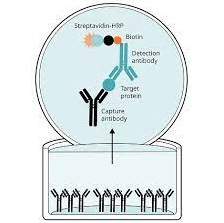What is the Goal of the ELISA Assay?
ELISA (Enzyme-Linked Immunosorbent Assay) is a powerful and widely used laboratory technique that plays a crucial role in detecting and quantifying various substances, especially proteins, in biological samples. The ELISA assay aims to provide a susceptible and specific method for researchers and clinicians to identify and measure the presence of target molecules. This article will delve into the details of ELISA assay, its different variations, applications, and how it contributes to scientific and medical advancements.
Introduction
Elisa Washer has revolutionized the field of biomedical research and diagnostics by allowing scientists to detect and quantify specific molecules with high accuracy and precision. This technique has wide-ranging applications, from diagnosing diseases to monitoring the effectiveness of therapies.
Understanding ELISA Assay
Principle of ELISA
At its core, ELISA is based on the interaction between an antigen and an antibody. It involves immobilizing either the antigen or the antibody onto a solid surface, such as a microplate well. When a sample containing the target molecule is added, any binding between the antigen and antibody is detected using an enzyme-linked detection system.
Types of ELISA
Direct ELISA
In a direct ELISA, an antigen is immobilized on the surface, and a labeled antibody is directly used to detect the antigen. This method is simple but may lack sensitivity due to the limited number of enzyme labels that can attach to a single antibody.
Indirect ELISA
The indirect ELISA involves immobilizing the antigen, then adding a primary antibody that binds to the antigen. A secondary antibody, labeled with an enzyme, is then introduced to detect the primary antibody. This approach enhances sensitivity and allows signal amplification.
Sandwich ELISA
Sandwich ELISA is used for detecting antigens with multiple epitopes. The sample is captured between two antibodies – one immobilized and the other enzyme-labeled – creating a “sandwich.” This method is highly sensitive and specific.
Competitive ELISA
In competitive ELISA, a known labeled antigen competes with the unlabeled sample antigen for binding to limited antibody sites. The degree of competition indicates the amount of the target antigen in the sample.
Importance of ELISA Assay in Research
ELISA assay plays a pivotal role in various research areas:
Disease Diagnosis
ELISA is instrumental in diagnosing diseases like HIV, hepatitis, and autoimmune disorders. It detects antibodies or antigens produced in response to infections or diseases, aiding in early diagnosis.
Drug Development
Pharmaceutical companies use ELISA to quantify drug levels in blood samples during clinical trials. This ensures accurate dosing and monitors the drug’s effectiveness and safety.
Allergen Testing
ELISA helps identify allergens in foods and the environment, enabling individuals to manage allergies effectively.
Step-by-Step Procedure of ELISA Assay
- Coating: The antigen or antibody is immobilized in a microplate well.
- Blocking: Unbound sites on the microplate are blocked to prevent nonspecific binding.
- Binding: The sample containing the target molecule is added, allowing binding to occur.
- Detection: An enzyme-labeled secondary antibody is introduced to bind to the target molecule.
- Quantification: A substrate is added, and the enzyme produces a detectable signal, the intensity of which is proportional to the target molecule’s concentration.
Factors Affecting ELISA Assay
Sensitivity and Specificity
ELISA’s sensitivity refers to its ability to detect low concentrations of the target molecule, while specificity refers to its ability to accurately distinguish the target molecule from other substances.
Cross-Reactivity
Cross-reactivity occurs when antibodies recognize similar molecules, leading to false positive results.
Signal-to-Noise Ratio
A high signal-to-noise ratio indicates accurate results with minimal background noise.
Advantages and Limitations of ELISA Assay
ELISA’s advantages include its speed, ease of use, and ability to handle multiple samples. However, it may have limitations in quantifying extremely low concentrations and dealing with complex samples.
Innovations in ELISA Technology
ELISpot Assay
ELISpot assesses immune responses at the single-cell level, making it valuable in vaccine development and immunology research.
Reverse-ELISA
In reverse ELISA, a known antigen is immobilized, and different antibodies are tested for their binding ability. It is useful in studying antibody-antigen interactions.
Conclusion
The Elisa Washerhas transformed biomedical research and diagnostics, enabling accurate and sensitive detection of target molecules. Its versatility, ease of use, and potential for customization continue to drive scientific discoveries and advancements in medicine.
FAQs
- Is ELISA only used for protein detection? ELISA is commonly used for protein detection, but it can also detect other molecules like hormones, antibodies, and DNA.
- Can ELISA diagnose cancer? ELISA can aid in cancer diagnosis by detecting specific tumor markers or antibodies related to certain cancers.
- What is the advantage of sandwich ELISA? Sandwich ELISA’s advantage lies in its high sensitivity and specificity, making it suitable for detecting low-abundance antigens.
- How does ELISpot differ from traditional ELISA? ELISpot measures cytokine secretion from individual cells, providing insights into cellular immune responses, while traditional ELISA measures soluble antigens.
